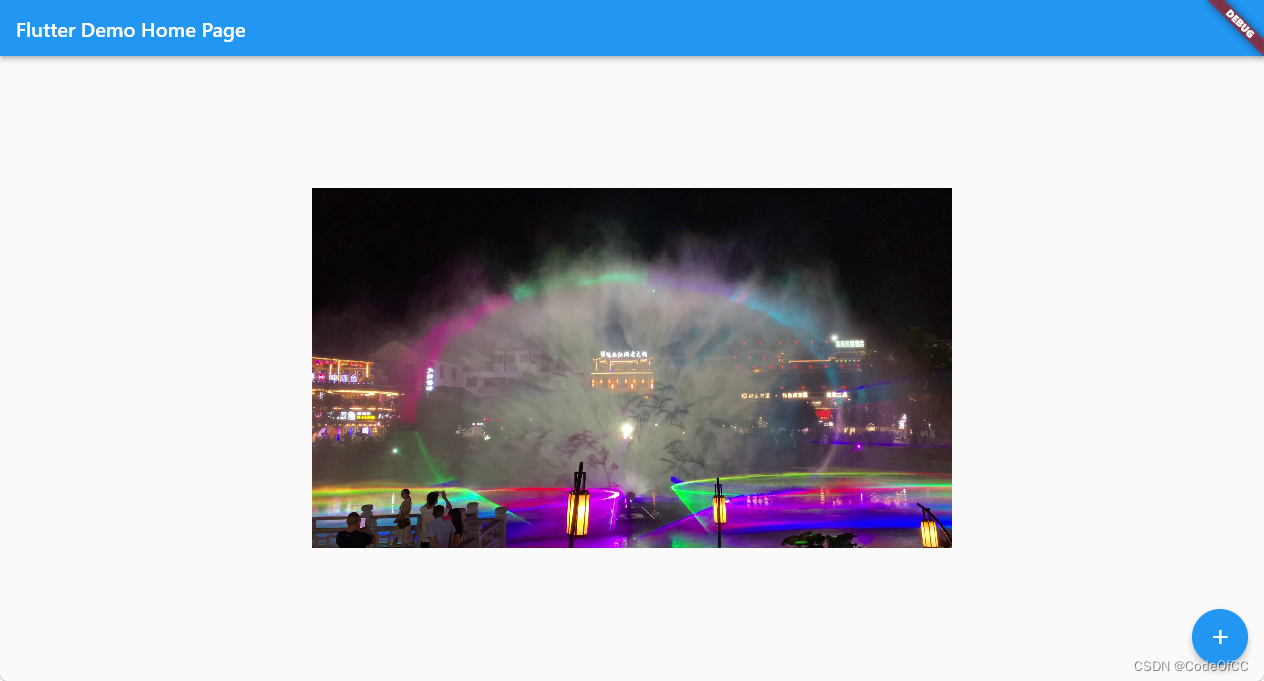前言
flutter渲染视频的方法有多种,比如texture、platformview、ffi,其中texture是通过flutter自己提供的一个texture对象与dart界面关联后进行渲染,很容易搜索到android和ios的相关资料,但是大部分资料不够详细,尤其是jni渲染部分基本都略过了,对于使用flutter但不熟悉安卓的情况下,是比较难搞清楚通过texure拿到surface之后该怎么渲染。所以本文将说明整体的渲染流程。
一、如何实现?
1、定义Texture控件
在界面中定义一个Texture
Container(
width: 640,
height: 360,
child: Texture(
textureId: textureId,
))
2、创建Texture对象
java
TextureRegistry.SurfaceTextureEntry entry =flutterEngine.getRenderer().createSurfaceTexture();
3、关联TextureId
dart
int textureId = -1;
if (textureId < 0) {
//调用本地方法获取textureId
methodChannel.invokeMethod('startPreview',<String,dynamic>{'path':'test.mov'}).then((value) {
textureId = value;
setState(() {
print('textureId ==== $textureId');
});
});
}
java
//methodchannel的startPreview方法实现,此处略
TextureRegistry.SurfaceTextureEntry entry =flutterEngine.getRenderer().createSurfaceTexture();
result.success(entry.id());
4、写入rgba
java
TextureRegistry.SurfaceTextureEntry entry = flutterEngine.getRenderer().createSurfaceTexture();
SurfaceTexture surfaceTexture = entry.surfaceTexture();
Surface surface = new Surface(surfaceTexture);
String path = call.argument("path");
//调用jni并传入surface
native_start_play(path,surface);
jni c++
ANativeWindow *a_native_window = ANativeWindow_fromSurface(env,surface);
ANativeWindow_setBuffersGeometry(a_native_window,width,height,WINDOW_FORMAT_RGBA_8888);
ANativeWindow_Buffer a_native_window_buffer;
ANativeWindow_lock(a_native_window,&a_native_window_buffer,0);
uint8_t *first_window = static_cast<uint8_t *>(a_native_window_buffer.bits);
//rgba数据
uint8_t *src_data = data[0];
int dst_stride = a_native_window_buffer.stride * 4;
//ffmpeg的linesize
int src_line_size = linesize[0];
for(int i = 0; i < a_native_window_buffer.height;i++){
memcpy(first_window+i*dst_stride,src_data+i*src_line_size,dst_stride);
}
ANativeWindow_unlockAndPost(a_native_window);
其中jni方法定义:
extern "C" JNIEXPORT void JNICALL Java_com_example_ffplay_1plugin_FfplayPlugin_native_1start_1play( JNIEnv *env, jobject /* this*/, jstring path,jobject surface) ;
二、示例
1.使用ffmpeg解码播放
main.dart
import 'package:flutter/material.dart';
import 'package:flutter/services.dart';
MethodChannel methodChannel = MethodChannel('ffplay_plugin');
void main() {
runApp(MyApp());
}
class MyApp extends StatelessWidget {
// This widget is the root of your application.
@override
Widget build(BuildContext context) {
return MaterialApp(
title: 'Flutter Demo',
theme: ThemeData(
primarySwatch: Colors.blue,
),
home: MyHomePage(title: 'Flutter Demo Home Page'),
);
}
}
class MyHomePage extends StatefulWidget {
MyHomePage({Key? key, required this.title}) : super(key: key);
final String title;
@override
_MyHomePageState createState() => _MyHomePageState();
}
class _MyHomePageState extends State<MyHomePage> {
int _counter = 0;
int textureId = -1;
Future<void> _createTexture() async {
print('textureId = $textureId');
//调用本地方法播放视频
if (textureId < 0) {
methodChannel.invokeMethod('startPreview',<String,dynamic>{'path':'https://sf1-hscdn-tos.pstatp.com/obj/media-fe/xgplayer_doc_video/flv/xgplayer-demo-360p.flv'}).then((value) {
textureId = value;
setState(() {
print('textureId ==== $textureId');
});
});
}
}
@override
Widget build(BuildContext context) {
return Scaffold(
appBar: AppBar(
title: Text(widget.title),
),
//控件布局
body: Center(
child: Row(
mainAxisAlignment: MainAxisAlignment.center,
children: <Widget>[
if (textureId > -1)
ClipRect (
child: Container(
width: 640,
height: 360,
child: Texture(
textureId: textureId,
)),
),
],
),
),
floatingActionButton: FloatingActionButton(
onPressed: _createTexture,
tooltip: 'createTexture',
child: Icon(Icons.add),
),
);
}
}
定义一个插件我这里是fflay_plugin。
fflayplugin.java
if (call.method.equals("startPreview")) {
//创建texture
TextureRegistry.SurfaceTextureEntry entry =flutterEngine.getRenderer().createSurfaceTexture();
SurfaceTexture surfaceTexture = entry.surfaceTexture();
Surface surface = new Surface(surfaceTexture);
//获取参数
String path = call.argument("path");
//调用jni开始渲染
native_start_play(path,surface);
//返回textureId
result.success(entry.id());
}
public native void native_start_play(String path, Surface surface);
native-lib.cpp
extern "C" JNIEXPORT void
JNICALL
Java_com_example_ffplay_1plugin_FfplayPlugin_native_1start_1play(
JNIEnv *env,
jobject /* this */, jstring path,jobject surface) {
//获取用于绘制的NativeWindow
ANativeWindow *a_native_window = ANativeWindow_fromSurface(env,surface);
//转换视频路径字符串为C中可用的
const char *video_path = env->GetStringUTFChars(path,0);
//初始化播放器,Play中封装了ffmpeg
Play *play=new Play;
//播放回调
play->Display=[=](unsigned char* data[8], int linesize[8], int width, int height, AVPixelFormat format)
{
//设置NativeWindow绘制的缓冲区
ANativeWindow_setBuffersGeometry(a_native_window,width,height,WINDOW_FORMAT_RGBA_8888);
//绘制时,用于接收的缓冲区
ANativeWindow_Buffer a_native_window_buffer;
//加锁然后进行渲染
ANativeWindow_lock(a_native_window,&a_native_window_buffer,0);
uint8_t *first_window = static_cast<uint8_t *>(a_native_window_buffer.bits);
uint8_t *src_data = data[0];
//拿到每行有多少个RGBA字节
int dst_stride = a_native_window_buffer.stride * 4;
int src_line_size = linesize[0];
//循环遍历所得到的缓冲区数据
for(int i = 0; i < a_native_window_buffer.height;i++){
//内存拷贝进行渲染
memcpy(first_window+i*dst_stride,src_data+i*src_line_size,dst_stride);
}
//绘制完解锁
ANativeWindow_unlockAndPost(a_native_window);
};
//开始播放
play->Start(video_path,AV_PIX_FMT_RGBA);
env->ReleaseStringUTFChars(path,video_path);
}
效果预览
android TV横屏

总结
以上就是今天要讲的内容,flutter在安卓上渲染视频还是相对容易实现的。因为资料比较多,但是只搜索fluter相关的资料只能了解调texture的用法,无法搞清楚texture到ffmpeg的串连,我们需要单独去了解安卓调用ffmpeg渲染才能找到的它们之间的关联。总的来说,实现相对容易效果也能接受。